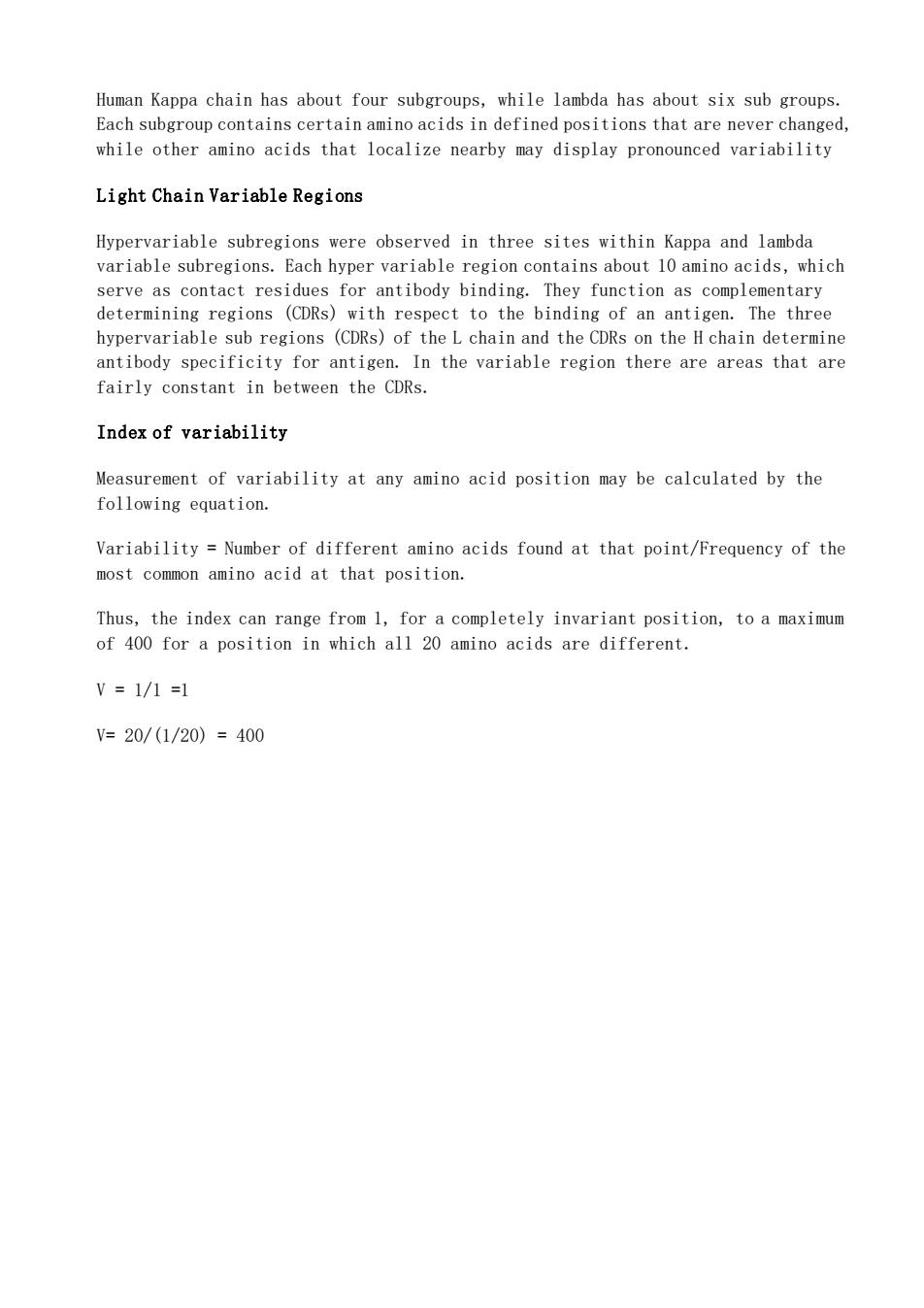正在加载图片...

Human Kappa chain has about four subgroups,while lambda has about six sub groups. Each subgroup contains certain amino acids in defined positions that are never changed, while other amino acids that localize nearby may display pronounced variability Light Chain Variable Regions Hypervariable subregions were observed in three sites within Kappa and lambda variable subregions.Each hyper variable region contains about 10 amino acids,which serve as contact residues for antibody binding.They function as complementary determining regions (CDRs)with respect to the binding of an antigen.The three hypervariable sub regions (CDRs)of the L chain and the CDRs on the H chain determine antibody specificity for antigen.In the variable region there are areas that are fairly constant in between the CDRs. Index of variability Measurement of variability at any amino acid position may be calculated by the following equation. Variability =Number of different amino acids found at that point/Frequency of the most common amino acid at that position Thus,the index can range from 1,for a completely invariant position,to a maximum of 400 for a position in which all 20 amino acids are different. y=1/1=1 V=20/(1/20)=400 Human Kappa chain has about four subgroups, while lambda has about six sub groups. Each subgroup contains certain amino acids in defined positions that are never changed, while other amino acids that localize nearby may display pronounced variability Light Chain Variable Regions Hypervariable subregions were observed in three sites within Kappa and lambda variable subregions. Each hyper variable region contains about 10 amino acids, which serve as contact residues for antibody binding. They function as complementary determining regions (CDRs) with respect to the binding of an antigen. The three hypervariable sub regions (CDRs) of the L chain and the CDRs on the H chain determine antibody specificity for antigen. In the variable region there are areas that are fairly constant in between the CDRs. Index of variability Measurement of variability at any amino acid position may be calculated by the following equation. Variability = Number of different amino acids found at that point/Frequency of the most common amino acid at that position. Thus, the index can range from 1, for a completely invariant position, to a maximum of 400 for a position in which all 20 amino acids are different. V = 1/1 =1 V= 20/(1/20) = 400